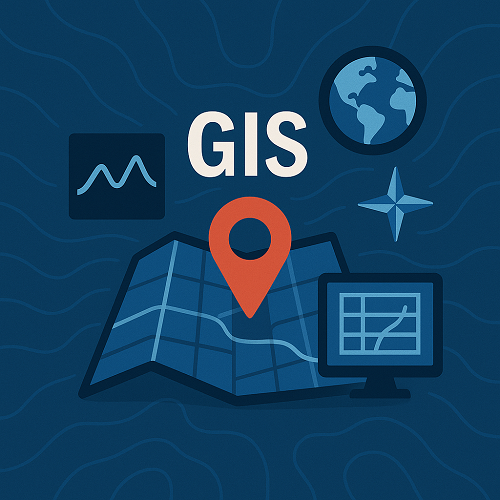TL;DR
- GIS is rapidly integrating AI, IoT, machine learning, and VR for real-time and immersive geospatial analysis.
- Blockchain is emerging as a secure way to manage and verify spatial data integrity.
- Open data and interoperability standards are accelerating cross-platform GIS applications.
- Industries from urban planning to logistics are leveraging real-time geospatial intelligence for faster decisions.
- Early adoption of these trends can significantly improve operational efficiency and risk management.
What’s new right now
The GIS sector is undergoing a technological leap in 2025, with several breakthrough integrations reshaping how spatial information is handled and analyzed. Artificial Intelligence and the Internet of Things are enabling real-time geospatial analytics, allowing instant insights from live sensor networks. Blockchain technology is starting to be used for secure geospatial record-keeping, ensuring the authenticity and traceability of datasets (source).
Machine learning applications are streamlining predictive modeling, whether for environmental monitoring or urban growth forecasting. Additionally, virtual reality is providing immersive interfaces for exploring complex datasets, offering stakeholders an intuitive perspective on spatial patterns and infrastructure planning.
Why it matters
For business leaders, these advancements mean faster, more reliable decision-making capabilities. Logistics companies, for instance, can route fleets in real time to avoid congestion. Governments can manage disaster responses more effectively with accurate, up-to-date mapping layers.
From a technical standpoint, interoperability and open data standards reduce vendor lock-in and promote innovation across platforms. This allows GIS teams to connect disparate datasets, enhance accuracy, and deliver more actionable insights across departments.
Deep Dive into Emerging GIS Trends
AI and IoT Integration
Integrating AI algorithms with IoT devices enables continuous spatial monitoring—feeding GIS platforms with high-velocity, high-volume data streams that can be analyzed in real time to predict changes and trigger automated actions.
Blockchain for Data Security
Blockchain can establish immutable records for geospatial transactions. This is especially critical in sectors like cadastral mapping, environmental compliance, and critical infrastructure, where data authenticity is paramount.
Open Data and Interoperability
Global initiatives, such as the Open Data Charter, are pushing for transparent and easily shared geospatial datasets. Interoperable GIS tools facilitate cross-organization collaboration and consistent analysis quality.
VR and Immersive GIS Interfaces
Virtual reality enables planners and analysts to walk through proposed developments and simulated scenarios, adding context to abstract datasets and enabling rapid option evaluation.
Technology Trend Comparison
| Technology | Primary Benefit | Key Limitation |
|---|---|---|
| AI + IoT | Real-time predictive analytics | Requires high-quality streaming data infrastructure |
| Blockchain | Secure, verifiable data exchange | Scalability and transaction costs |
| VR Interfaces | Immersive spatial understanding | High hardware and processing requirements |
| Open Data | Enhanced collaboration and innovation | Potential data privacy concerns |
Mini Case Study: Real-Time Flood Response System
Problem: A coastal city faced recurring flood events, with delayed responses due to outdated GIS data and lack of inter-agency coordination.
Approach: The city deployed a network of IoT water-level sensors connected to an AI-powered GIS dashboard. Blockchain was used to timestamp sensor data, ensuring trusted information across city departments. VR simulations were created to visualize different flood containment strategies.
Outcome: Emergency response times improved by 35%, flood damage costs decreased by 20%, and public communication channels displayed accurate, live hazard maps.
Implementation Checklist
- Assess current GIS infrastructure and identify integration points for AI, IoT, or blockchain.
- Establish interoperability standards and workflows across existing systems.
- Source reliable, real-time data streams from IoT devices or partner agencies.
- Implement scalable cloud infrastructure to handle large geospatial datasets.
- Train teams to utilize VR or immersive GIS tools for scenario planning.
- Continuously monitor performance and calibrate AI models with updated datasets.
FAQs
What is the role of AI in GIS?
AI enhances GIS by enabling predictive analytics, pattern recognition, and automated feature extraction from spatial data.
How can blockchain improve GIS data trust?
Blockchain provides immutable, timestamped records of spatial transactions, reducing the risk of tampering or data loss.
Is VR practical for most GIS applications?
While VR adds value in planning and stakeholder presentations, it may require high technical investment, making it more suitable for large-scale projects.
What are interoperability standards in GIS?
They are protocols and formats that allow different GIS software and systems to work together seamlessly, ensuring accurate data exchange.
Why is open data important to GIS professionals?
Open data expands the pool of available datasets, fosters innovation, and enables better multi-agency cooperation.
What industries benefit most from real-time GIS?
Logistics, public safety, environmental management, urban planning, and utilities management gain the most from live spatial intelligence.
Conclusion
The convergence of AI, IoT, blockchain, and immersive technologies is redefining what’s possible with GIS in 2025. Organizations that adopt these advancements now will be better positioned to make data-driven decisions, respond faster to challenges, and capitalize on emerging opportunities. To learn more or to start a tailored adoption plan, explore our GIS services.
